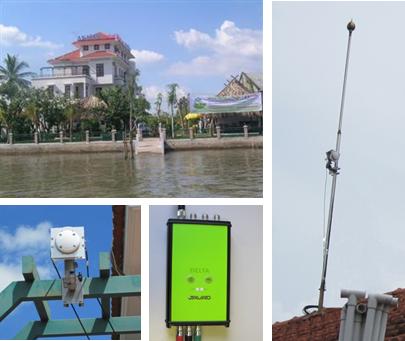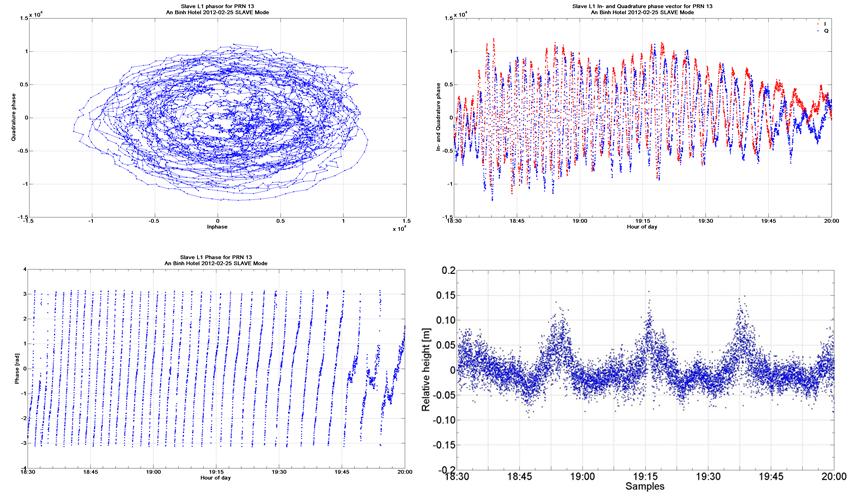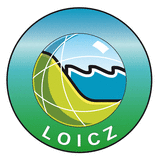GPS reflectometry for water level monitoring
To test the possibility of using GNSS-Reflectometry as a water level monitoring instrument, a first measurement campaign has been made between the 25th February and 7th Mars 2012 in Vietnam at Can Tho city. The typical building height along the coasts of the Mekong Delta in this area doesn’t exceed 40m so that one challenge will be to separate the direct signal from the reflected one.
The measurements were conducted at the An Bihn Hotel (9.99°N, 105.74°E) with two different antenna heights (10m and 20m above the reflecting surface) to analyse the impact of geometry on the measurements quantity and quality.
A special manufactured antenna mounting was used to fix the two antennas and was oriented southwards. However, the direct view to the Mekong delta was obstructed because of the existing vegetation on the river bank (palm, trees), so that we expect a multipath effect on the direct and the reflected signal. The Right Hand Circular Polarized (RHCP) antenna was oriented to the zenith to capture the direct signals and the Left Hand Circular Polarized (LHCP) antenna was tilted 175° with respect to the nadir to capture the reflected signals.
Two principle GNSS-R altimetry methods exist: the code based and the carrier phase based altimetry. The latter is more accurate but requires continuous and coherent carrier phase observations. With the aim to achieve high altimetric accuracy, a new generation of GORS (GNSS Occultation, Reflectometry and Scatterometry) JAVAD DELTA receiver has been developed at GFZ in collaboration with JAVAD. This specially adapted receiver firmware permits the record of In(I)- and quadrature(Q)-phase of the reflected and direct signal with a rate of 200 Hz and thus gives the opportunity to analyze the phase observable. Up to 10 reflection events can be observed simultaneously.
Coherent observations were successfully extracted from the recorded test measurements so that water level changes could be derived.

Fig. 1: upper left) An Bihn Hotel in Can Tho, Vietnam. Lower left) in the first measurement series, the antenna was placed on the balustrade of the terrace of the Hotel with an approximate height of 10m above the Mekong Delta. Lower middle) the GORS receiver, and right) for the second measurement series were made on the roof of the Hotel with an approximate height of 20m above the Mekong Delta.

Fig. 2: Coherent observations: upper left) Salve phasor showing the typical rotation of the In(I)- and Quadrature(Q)-phase complex vector during coherent observations. Upper right) Typical offset of 90° between the I and Q vector during coherent observations. Lower left) Phase observations. Lower right) Water level changes recorded on 2012.02.25, Can Tho city, Vietnam at An Binh Hotel.




